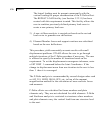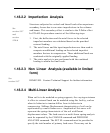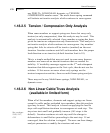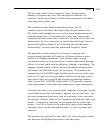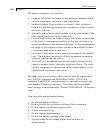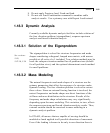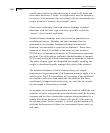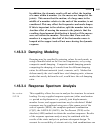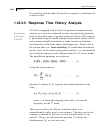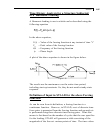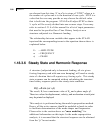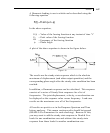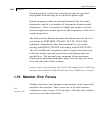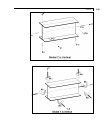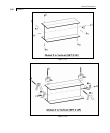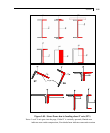
General Description
Section 1
1-84
be created to include either the positive or negative contribution of
seismic results.
1.18.3.5 Response Time History Analysis
STAAD is equipped with a facility to perform a response history
analysis on a structure subjected to time varying forcing function
loads at the joints and/or a ground motion at its base. This analysis
is performed using the modal superposition method. Hence, all the
active masses should be modeled as loads in order to facilitate
determination of the mode shapes and frequencies. Please refer to
the section above on
"mass modeling" for additional information
on this topic. In the mode superposition analysis, it is assumed that
the structural response can be obtained from the "p" lowest modes.
The equilibrium equations are written as
See Sections
5.31.6 and
5.32.10.2
{P(t)} [k]{x} }x[c]{ }x[m]{
=
+
+
&&&
… … (1)
Using the transformation
{} {}
i
i
p
1i
q x φ=
∑
=
… … … … (2)
Equation 1 reduces to "p" separate uncoupled equations of the
form
(t)
i
R
i
q ω
i
q
i
ω
i
ξ 2
i
q =++
2
i
&&&
… … (3)
where
is the modal damping ratio and ξ
ω
the natural
frequency for the i
th
mode.
These are solved by the Wilson- θ method which is an
unconditionally stable step by step scheme. The time step for the
response is entered by the user or set to a default value, if not
entered. The q
i
s are substituted in equation 2 to obtain the
displacements {x} at each time step.



